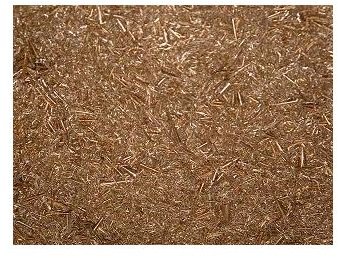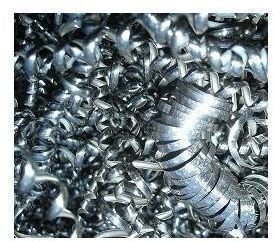The role of Machinability in metal cutting parameters
The Role of Machinability in metal cutting parameters
The machinability of a material can be defined as the ease with which it can be cut (machined) by a tool to the required quality of finish.
Practically, no two materials subject to machining can behave alike when cutting them with the same tool, at the same cutting speed and feed rates, using the same machine, and working under similar conditions. Some may produce long curly chips (like mild steel), some may produce short chips (like cast iron), some may get a smooth finish, some may end up with a rough surface, some may produce chatter, and some may produce lots of heat and quickly blunt the tool.

How work materials affect machinability:
Properties of work materials that may affect machinability are: microstructure, grain size, heat treatment, chemical composition, fabrication, hardness, yield strength, and tensile strength as well as physical properties such as the modulus of elasticity, thermal conductivity, thermal expansion, and work hardening.
Crystal structure, arrangement of atoms such as BCC (body centered cubic), FCC (face centered cubic), and hexagonal, may make separation of atoms easier or harder and affect machinability. Atoms are not arranged in a regular way and a piece of metal is made of regulatory regions so-called “crystal grains” and at grain boundaries atoms are misaligned. Heat treatment may change crystal structure and this way affect machianability.
Chemical composition may affect machinability, for instance If you take steel, the percentage of carbon present in the steel, which determines generally the classification and strength of the steel (like low-carbon steel, medium carbon steel and high carbon steel) has a direct influence on the machinability – the higher the carbon content, the more difficult it is to machine. In alloy steels, the presence of elements like Chromium, Nickel, molybdenum, and Vanadium, etc. can cause decreased machinability.
fabrication methods like casting, hot rolling, cold rolling, forging may change structure, grain size and other properties of metals and affect machinability.
Generally speaking, any change in metal properties, due to nature of change, can have positive or negative effect on machinablity.
Alloying elements that help improve machinability:
In iron and steel, the presence of Sulphur (up to 0.35%) helps in the breaking of chips and helps in improving machinability. Lead acts as lubricant at the tool tip and facilitates ease of machining. The presence of nitrogen is also desirable. Phosphorus is yet another element whose presence improves machinability.
The idea of Free Cutting Steel
In applications of steel, where any specific material property (like surface hardness) or strength is not of prime importance (in typical products like handles, levers, spacers, hydraulic fittings, low tensile screws etc), it is best to use a steel material whose machinability is extremely good. A typical Low carbon free cutting steel is AISI C1118 (equivalent to Indian Standard 14Mn1S14, DIN 15S20, and British En202) and another popular free cutting medium carbon steel is AISI C1139 (equivalent to Indian Standard 40Mn2S12, DIN 45S20, and British En15AM).
The need for relative information about machinability – the Machinability Rating
When a machine shop has to undertake the machining of a new material, it has to arrive at the right cutting parameters like tool material, cutting speed, feed rate, the right machine to use, etc. Knowing how difficult or easy it is to machine when compared to a familiar material (like a free cutting steel) would be of immense help. This comparative information is what “Machinability Rating” data provides.
Taking a typical free cutting steel (AISI B1112, a steel with a chemical composition having Carbon 0.08-0.13 %, manganese 0.60-0.90%, Phosphorous 0.09-0.13%, and Sulphur 0.16-0.23% and having a hardness of 160 BHN) as a reference material and allocating a Machinability Rating (also referred as Machinability Index) of 1.0 to it, AISI conducted machining trials on a variety of materials under controlled and commonly set parameters. Based on such trials, Machinability Ratings (MR) were allocated to other materials.
Accordingly, a material having MR less than 1 is more difficult to machine in comparison with B1112 material. If the index is more than 1, it is comparatively easier to machine that material.
For example, medium carbon steel AISI 1045 (IS: C45, DIN Ck45, British En8D) has a Machinability rating of 0.5. It means it is twice as difficult to machine in comparison with B1112.
The material Inconel 718 (an extremely tough and heat resistant Iron alloy with Ni plus Co up to 55%, Cr up to 21% and Mo up to 3% which is used in Rocket parts, gas turbines and nuclear reactor parts) has a machinability rating of around 0.1, which means it is 10 times more difficult to machine than the free cutting steel.
Standard malleable Iron, for example, has a machinability rating of 1.1 and it means that it is 10% more easily machined in comparison with the free cutting steel B1112.
Influence of other cutting parameters on machinability
As we saw in part one of the series, every cutting parameter involved in metal cutting has a bearing and an influence on other parameters.
Depending on the machinability of a material, one has to choose other cutting parameters to get the best results in machining a component to the required finish, rate of output and economy of machining.
Tool Material: The lower the machinability rating of a material, the harder and tougher must be the tool material. Choice of appropriate Carbide grade and/or the type of “coated Carbide” to use, or need for going in for tool materials like CBN, Ceramic etc will be warranted as the material to be cut turns out to be more and more tougher.
Tool Geometry: The choice of tools based on the right amount of rake angle, and the design of chip breaker in the tool are also to be considered, based on machinability.
Speeds: The cutting speed must be properly balanced with the tool material and the work material’s machinability rating, to get the best possible tool life. While a higher cutting speed may solve a poor surface finish problem for a work material, it may result in rapid tool wear resulting in loss of control in maintaining dimensions.
Rigidity of machine: The use of old machine tools with limited power may act as a hindrance in machining materials with very low machinability rating. Need for switching over to CNC machine tools equipped with LM guides and ball screw drives with large spindle power may be warranted in case of machining very tough materials to very close tolerances and surface finish requirements.
Thus the machinability of a material plays a huge role in deciding the cutting parameters. Design Engineers should ideally take into account the machinability rating of a material before selecting one for a given application.
References:
-
Machine Tool Design Handbook - CMTI, Tata Mcgraw Hill
-
Machinability Rating charts -www.quakerchem.com
3)Ferroalloys and other additives to liquid iron and steel: a symposium
By J. R. Lampman, A. T. Peters, ASTM Committee
- Machinability, from Wikipedia, the free encyclopedia, https://en.wikipedia.org/wiki/Machinability#cite_note-1
This post is part of the series: Metal Cutting - Understanding the roles played by Various Cutting Parameters
In metal cutting, various cutting parameters like cutting speed, feed rate, depth of cut, tool material, work material etc are involved. This article series explores the influence of each on the other parameters. Part:1 introduces the parameters in brief. Subsequent parts elaborate them one by one.
- Conventional Metal Cutting – Understanding the Roles Played by Various Cutting Parameters
- Conventional Metal Cutting - Understanding the Roles Played by Various Cutting Parameters - (a) Machinability
- Conventional Metal Cutting - Understanding the Roles Played by Various Cutting Parameters - (b) Tool Material - HSS
